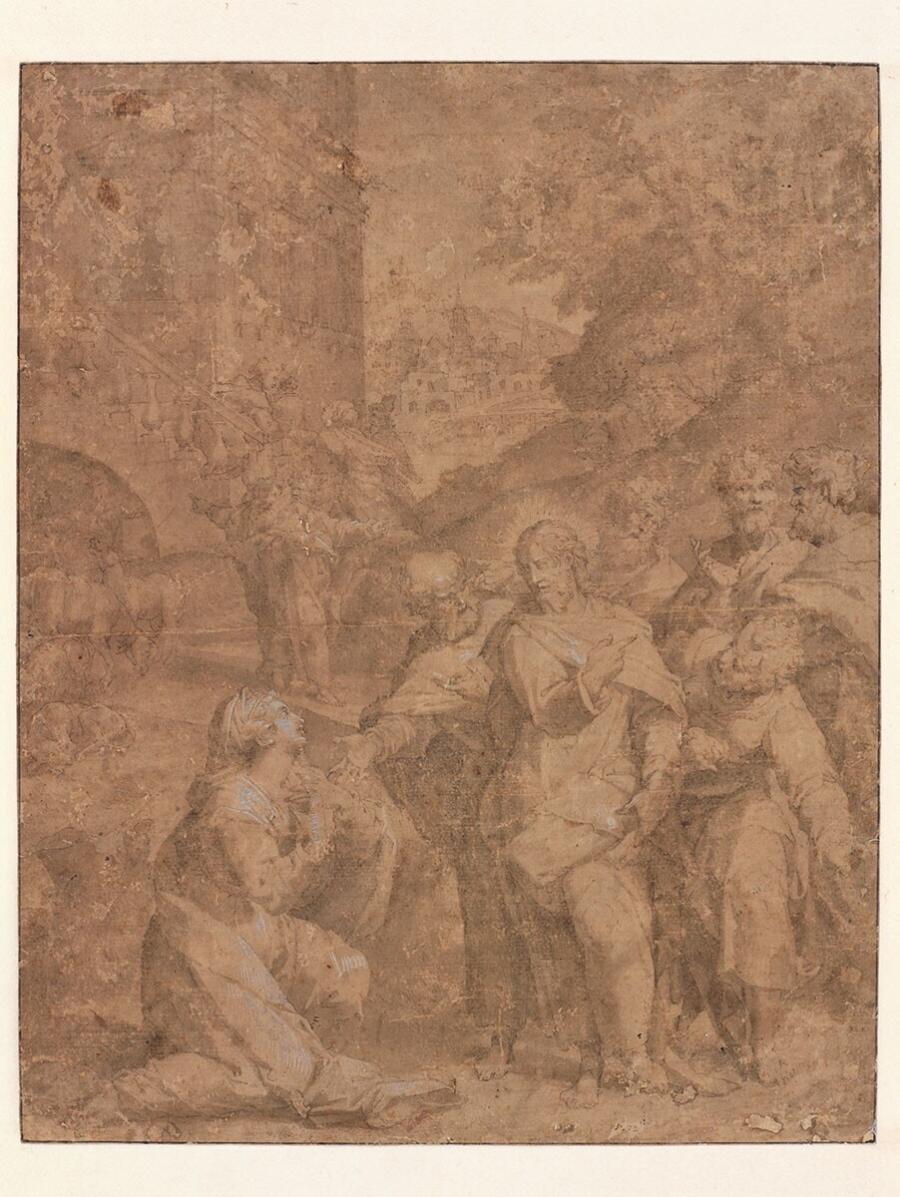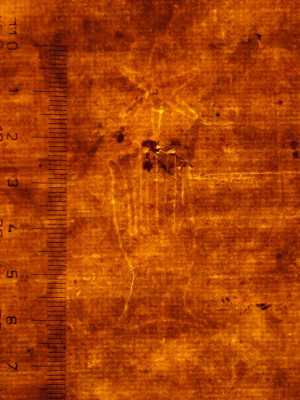Specifications
| Title | Christ and the Woman from Canaan |
|---|---|
| Material and technique | Black chalk, pen and brown ink, brown wash, heightened with white, laid down |
| Object type |
Drawing
> Two-dimensional object
> Art object
|
| Location | This object is in storage |
| Dimensions |
Height 308 mm Width 244 mm |
|---|---|
| Artists |
:
Lavinia Fontana
Attributed to: Orazio Samacchini |
| Accession number | MB 1731 (PK) |
| Credits | Acquisition unknown |
| Department | Drawings & Prints |
| Creation date | in circa 1576-1577 |
| Watermark | hand surmounted by a six-pointed star (63 x 20mm, in the centre, upside-down), similar to Briquet 10706-23 (Geneva or Piemonte make, doc. primarily in Italy, 1440-1576), no similar one in Piccard Online (vH, 9P, folio)(+DIGIT)(AE 22.06.2012); the backing paper has no watermark (vV, ?P) |
| Inscriptions | 'b 72' (below right., pen and brown ink), '36' and below '31' (verso, pen and brown ink) |
| Mark | (?) J. Somers (L.2981, inv. 'b 72') |
| Provenance | (?) The collection of drawings (2638 sheets in 16 albums, this sheet in Album B, no. 72 #attribution), formed by Padre Sebastiano Resta (1635-1714), Milan, for Giovanni Matteo Marchetti, bishop of Arezzo (L.2911 deest); (?) John Lord Somers (L.2981, inv. 'b. 72')*, (?) acquired with the Marchetti Collection from Marchetti's cousin the Cavaliere Marchetti of Pistoia in 1710; - ; year and source of sale unknown, before 1940 |
| Research |
Show research Italian Drawings 1400-1600 |
| Material | |
| Object | |
| Technique |
Highlight
> Painting technique
> Technique
> Material and technique
Brown wash
> Washing
> Wash
> Drawing technique
> Technique
> Material and technique
|
| Geographical origin | Italy > Southern Europe > Europe |
| Geographical origin | Southern Netherlands > The Netherlands > Western Europe > Europe |
Do you have corrections or additional information about this work? Please, send us a message

























